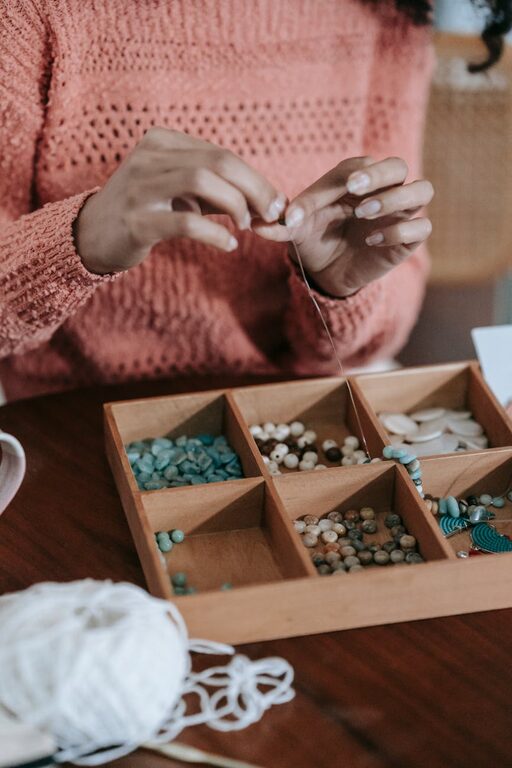Children’s artwork is a wonderful expression of their creativity and growth. From colorful drawings to imaginative crafts, these pieces hold sentimental value for parents and kids alike. However, keeping all that artwork organized can become overwhelming quickly. Without a proper system, stacks of paper and projects can clutter your home and create stress.
Fortunately, with some simple strategies, you can keep your kids’ art organized, preserve memories, and create a space that inspires creativity. This post shares practical tips to help you manage, store, and display your children’s masterpieces effectively.
Why Organizing Kids’ Art Matters
Organizing your kids’ art is more than tidying up. It helps you:
– Preserve meaningful moments from your child’s development.
– Reduce clutter and keep your home orderly.
– Encourage your child’s creativity by valuing their work.
– Make it easier to share their art with friends and family.
– Find and access specific projects quickly when needed.
Now let’s explore some actionable ways to keep these cherished creations in check.
1. Set Up a Dedicated Art Space
Having a specific area in your home for art projects makes it easier to keep materials and finished pieces in one spot.
– Choose a corner, a table, or a shelf where your child can create and display their art.
– Include storage bins or containers to hold supplies like crayons, paints, and paper.
– Make this area welcoming so your child enjoys using it regularly.
A dedicated space helps contain the “art mess,” making cleanup and organization simpler.
2. Rotate and Display Current Favorites
Kids love to see their work displayed. Select a few favorites to showcase prominently, and rotate them regularly.
– Use clipboards, frames, or a wire with clips to create a mini art gallery on a wall.
– Swap out drawings and paintings every few weeks to keep the display fresh.
– Praise your child’s effort as you change the artwork together.
This encourages pride in their work and prevents piles of art from accumulating in hidden corners.
3. Use Storage Solutions for Flat Artwork
For drawings and paintings on paper, consider these storage options:
– Portfolios: Large zippered or folder-style portfolios protect flat art and keep it organized by date or theme.
– Expandable Files: Accordion-style files can sort art by age, school year, or project type.
– Binders and Sleeves: Sheet protectors and binders allow easy flipping through artworks, making it feel like a personalized art book.
Labeling each storage container or section adds clarity and helps keep everything in order.
4. Digitize to Save Space and Preserve Memories
Digitizing artwork lets you keep a permanent record without the physical clutter.
– Use your smartphone or a scanner to take high-quality photos of drawings and crafts.
– Store images on a computer, cloud drive, or dedicated app for kids’ artwork.
– Create digital photo books or slideshows to celebrate your child’s creativity over time.
Digitizing also makes it easy to share artwork with distant family members or print copies for gifts.
5. Create Art Books or Scrapbooks
Turn your child’s artwork into a beautiful keepsake by compiling pieces into a scrapbook or printed book.
– Choose themed collections, such as “Preschool Art” or “Holiday Crafts.”
– Add dates, titles, or notes about the art to capture stories behind each piece.
– Use glue sticks, photo corners, or scans printed on quality paper.
This approach turns piles of art into a cherished collection that’s easy to enjoy and store.
6. Repurpose Art into Functional Items
Get creative by transforming your child’s art into something new and useful.
– Make custom greeting cards or gift wrap for holidays and birthdays.
– Create calendars featuring different artworks for each month.
– Use art to decorate bookmarks, magnets, or keepsake boxes.
This not only saves space but also gives art new life and purpose.
7. Encourage Selective Saving
It’s natural to want to keep every piece your child makes, but space and practicality require careful selection.
– Involve your child in deciding which pieces to keep, fostering decision-making skills.
– Focus on projects that show new skills, milestones, or special memories.
– Periodically sort through collections together to remove or digitize less important items.
This respectful approach helps balance sentimental value with organization.
8. Label and Date Everything
Adding dates and labels to artwork helps track your child’s progress and identifies when pieces were created.
– Use small sticky notes or write directly on the back of the artwork.
– Include details like your child’s age, grade, or the project’s context.
– This information becomes precious over time and adds meaning to each item.
9. Store 3D Art Thoughtfully
Three-dimensional projects, like sculptures or dioramas, can be tricky to store.
– Display cherished 3D art on shelves or in shadow boxes.
– For less permanent pieces, take photos before recycling or donating them.
– Use clear plastic storage bins to keep fragile projects protected.
Label bins by school year or project to stay organized.
Final Thoughts
Keeping kids’ artwork organized doesn’t have to be a daunting task. By establishing routines, using thoughtful storage solutions, and embracing creativity in how you preserve and display art, you create an organized environment that honors your child’s imagination.
Remember, the goal is to celebrate your child’s creativity without feeling overwhelmed by piles of paper or crafts. Choose the strategies that suit your family’s space and lifestyle – and enjoy the wonderful memories that come with every masterpiece.
—
With these tips in hand, your home can be both a creative haven and an organized space. Happy organizing!


